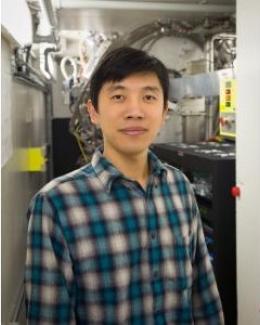Abstract
We address the reactivity of lithiated graphite−anode material for Li-ion batteries with standard organic solvents used in batteries (ethylene carbonate and dimethyl carbonate) by following changes in neutron scattering signals. The reaction produces a nanosized layer, the solid-electrolyte interphase (SEI), on the graphite particles. We probe the structure and chemistry of the SEI using small-angle neutron scattering (SANS) and inelastic neutron scattering. The SANS results show that the SEI fills 20−30 nm sized pores, and inelastic scattering experiments with H/D substitution show that this “chemical” SEI is primarily organic in nature; that is, it contains a large amount of hydrogen. The graphite−SEI particles show surface fractal scattering characteristic of a rough particle−void interface and are interconnected. The observed changes in the SEI structure and composition provide new insight into SEI formation. The chemically formed SEI is complementary and simpler in composition to the electro chemically formed SEI, which involves a number of different reactions and products that are difficult to deconvolute.







